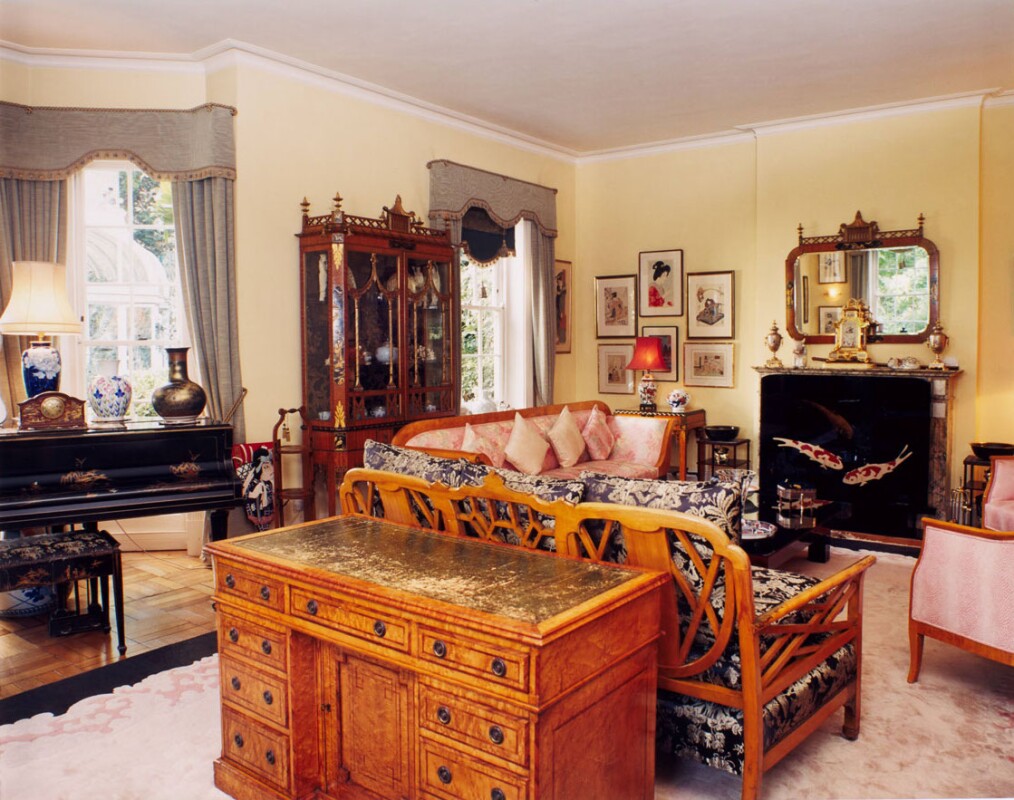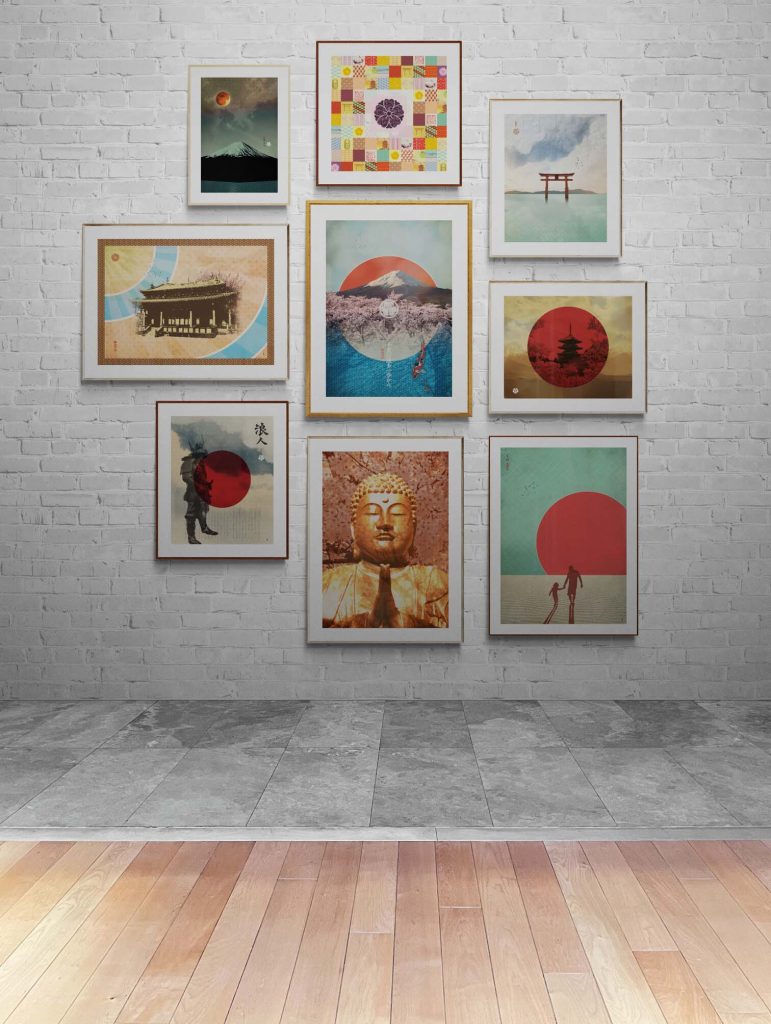Introduction
In the world of rock and roll, few figures are as iconic as Freddie Mercury, the legendary lead vocalist of Queen. Known for his electrifying performances, powerful voice, and flamboyant stage presence, Freddie Mercury was also a passionate collector of art, particularly Japanese art. This aspect of his life was recently thrust into the limelight when Sotheby’s, the renowned London auction house, dedicated a series of sales to the possessions of the rock legend. The auction series offered a glimpse into Mercury’s deep affinity for Japanese culture and art, showcasing not only his eclectic taste but also the significant influence of Japan on his life and collection.
Freddie Mercury’s Fascination with Japan: A Cultural Connection
Born Farrokh Bulsara on the island of Zanzibar, Mercury’s early life was marked by a sense of wanderlust and an international upbringing. His parents’ flight from the Zanzibar revolution in 1964 eventually led them to London, where Freddie Mercury studied graphic design and later formed Queen, one of the most iconic rock bands in history. This global exposure from a young age left an indelible mark on Mercury, contributing to his intellectual curiosity and eclectic tastes.
Mercury’s love for Japan began during Queen’s tour of America in 1975 when the band was promoting their album “Sheer Heart Attack.” Despite some challenges during the U.S. tour, the band found immense success when they ventured to Japan later the same year. Japanese fans greeted Queen with open arms, marking a pivotal moment in their career. Freddie Mercury, in turn, became an avid cultural advocate for Japan, exclaiming his love for the country’s lifestyle, people, and, significantly, its art.
This newfound passion for Japan wasn’t merely a superficial fascination. Mercury’s collection of Japanese art, ceramics, and prints attested to a deeper intellectual engagement with the country. His visits to Japan were not limited to touring, as he often embarked on private trips to regions like Kyushu, famous for its ceramics. His collection featured works from various Japanese time periods, including the Edo, Taisho, and Showa eras.
The Japanese Room: Mercury’s Quiet Sanctuary
In 1980, Freddie Mercury purchased the Garden Lodge, a grand neo-Georgian house in Kensington, London. The house, previously owned by artists Cecil Rae and Constance Halford, would become Mercury’s sanctuary and stage for his collection of Japanese art. While the upper floors were dedicated to parties and entertainment, the ground-floor drawing room underwent a remarkable transformation into the “Japanese Room.”

Mercury’s Japanese Room was an embodiment of his passion for Japanese aesthetics. Antique furniture, porcelain from the Edo to Showa periods, lacquered boxes, and pagoda-backed japanned chairs adorned the room. A rare, 17th-century porcelain Kakiemon bowl decorated with Ho-o birds took pride of place among the cherished items.
The centerpiece was a baby grand piano from John Broadwood & Sons, dating back to 1900, adorned with chinoiserie scenes. This piano was not just an elegant piece; it was a tribute to the Japanese influence that Mercury held dear. Furthermore, a rare print known as “Sudden Shower over Shin-Ohashi Bridge and Atake,” created by the 19th-century ukiyo-e master Utagawa Hiroshige, held a central place in the collection.
The Ukiyo-e Masterpiece: Sudden Shower over Shin-Ohashi Bridge and Atake
The sale of Freddie Mercury’s collection included an extensive array of Japanese woodblock prints, but the standout piece was undoubtedly “Sudden Shower over Shin-Ohashi Bridge and Atake” by Utagawa Hiroshige. This print was part of Hiroshige’s famed “One Hundred Views of Edo” series, and its sale value far exceeded expectations.
When the print was presented at Sotheby’s auction in London, it was estimated to fetch up to £50,000. However, the piece exceeded all expectations by selling for an astonishing £292,100, a testament to its exceptional condition and rich historical significance.
This artwork also held a unique connection to Western art history. Vincent van Gogh, the post-Impressionist painter, admired Hiroshige’s “Sudden Shower” to such an extent that he created a copy, which now resides in the Van Gogh Museum in Amsterdam. The print’s influence on van Gogh’s work adds an additional layer of significance to this already cherished piece.

An Auction Extravaganza: Beyond the Ukiyo-e Print
The Sotheby’s auction, which took place in September 2023, went beyond this prized Hiroshige print. It provided a comprehensive look at Mercury’s eclectic and well-curated collection of Japanese art, from ceramics to woodblock prints and kimonos. Among the pieces, an Ando Cloisonne vase sold for four times its estimated value, realizing a price between £6,000 and £10,000. Additionally, a lacquer standing screen by artist Katsuhiko Urade fetched an impressive £190,500, surpassing its initial estimate by 19 times.

The thematic focus on Japanese art was just one part of the larger auction series dedicated to Mercury’s estate. It began with the “Evening Sale,” which featured Mercury’s Yamaha baby grand piano, an instrument on which many Queen hits were composed. This piano sold for an astonishing £1.7 million. Handwritten working lyrics for “Bohemian Rhapsody,” revealing the earlier working title “Mongolian Rhapsody,” were also part of this sale, achieving a price of £1.4 million.
Both, the piano and the Hiroshige’s “Sudden Shower” print sold as part of the Freddie Mercury: A World of His Own | The Evening Sale which had a sale total in excess of £12 million. Another auction entitled Freddie Mercury: A World of His Own | In Love with Japan dedicated to 200 of Freddie Mercury’s kimonos, Japanese art prints and artifacts made in excess of £2.6 million.
A Resurgence of Interest in Japanese Art
Mercury’s penchant for Japanese art not only celebrated his exquisite collection but also reflected a broader trend in the art world. In recent years, Japanese art has been experiencing a resurgence of interest on the international market. Specialist Suzannah Yip, who founded the Japanese art department at Bonhams auction house in London, noted this shift in taste. Japanese art, often perceived as intricate and more affordable than some of its Asian counterparts, had been somewhat overlooked. However, a renewed interest has been brewing, driven by a diverse audience, including Americans, Middle Eastern collectors, and even Chinese buyers.

For some types of Japanese art, such as ukiyo-e prints by artists like Hiroshige and Katsushika Hokusai, international demand has remained strong even during challenging times in the art market. The appeal of other Japanese art forms, like netsuke, miniature sculptures often linked to traditional belts, has persisted, although stricter regulations on ivory have impacted part of this market.

Areas that have seen growth include Japanese arms and armor, particularly “sword furniture,” which encompasses both functional and decorative fittings made for weapons. Calligraphy, Zenga (Edo period ink paintings), and ceramics, including raku bowls used in tea ceremonies, have also gained popularity.
This renewed interest in Japanese art aligns with Japan’s position in the global art scene. As Tokyo gains prominence as an art hub, attracting the attention of overseas galleries and brands, the Japanese art market is expanding. Factors such as Japan’s relatively stable economy and a welcoming stance toward overseas investment are contributing to this development.
Conclusion
Freddie Mercury’s love for Japanese art, evident through his remarkable collection and the Sotheby’s auction dedicated to his estate, is a testament to the enduring appeal of Japanese art on the international stage. Mercury’s passionate approach to collecting mirrors the global resurgence of interest in this intricate and culturally rich art form. As Japan’s influence in the art world continues to grow, collectors and enthusiasts alike are finding themselves drawn to the nation’s art and culture, echoing the sentiment shared by one of rock’s greatest icons: “I loved it there: the lifestyle, the people, the art. Wonderful!”
Read more:
- Where Can I Buy Ukiyo-e Art? Here’s where to find those rare prints
- 11 Most Influential Ukiyo-e Artists: Masters of Japanese Woodblock Prints

At the Art of Zen we have a wide selection of original Japanese style art prints in the ukiyo-e and Japandi style. Some of our best selling work is Mount Fuji art and Japandi wall art.
Add some zen to your space with some art from the Art of Zen shop.
Featured image at top of Hiroshige’s Sudden Shower Over Shin-Ohasi Bridge and Atake hanging in Freddie Mercury dining room – Sotheby’s.




0 Comments